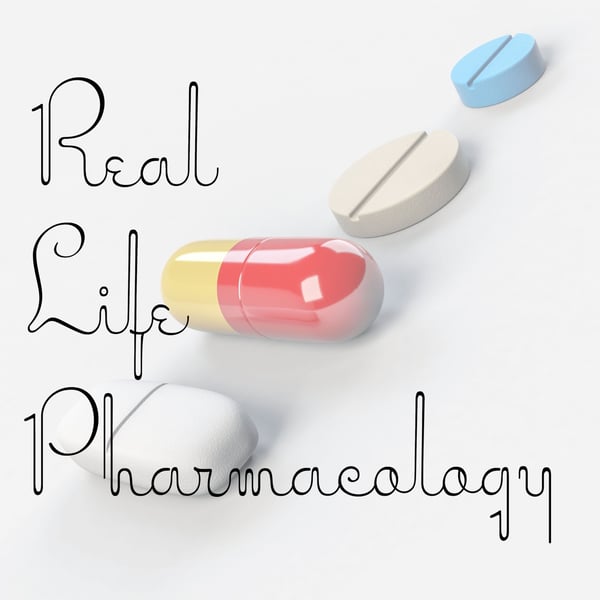Beers Criteria Podcast Part 2 or 2
Real Life Pharmacology - Pharmacology Education for Health Care Professionals
Eric Christianson, PharmD; Pharmacology Expert and Clinical Pharmacist
5 • 716 Ratings
🗓️ 28 March 2024
⏱️ 17 minutes
🧾️ Download transcript
Summary
I cover the use of sliding-scale insulin and sulfonylureas in geriatric patients. Hypoglycemia is a major concern with both of these diabetes management strategies.
PPIs show up on the Beers criteria list as they can increase the risk of C. diff, pneumonia, fractures, and GI malignancies.
Metoclopramide has dopamine antagonist activity and can increase the risk of EPS and tardive dyskinesia.
Transcript
Click on a timestamp to play from that location
| 0:00.0 | Hey all, welcome back to the Real Life Pharmacology podcast on this special episode, |
| 0:08.4 | Part 2 of 2 on the Beers criteria. |
| 0:12.8 | Before we get into that, do go support the sponsor, |
| 0:16.7 | MedHead101.com slash store. |
| 0:19.6 | We've got some next level study materials for BCPS, ambulatory care, BCMTMS, |
| 0:25.7 | NAPLEX exam, lots of different resources there at MedEd101.com slash store. |
| 0:33.3 | That can definitely help you prepare for and pass your board exam. |
| 0:38.9 | All right, so let's get into the drugs contained within the Beers criteria, part two. |
| 0:48.8 | Continuing on, I left off on some sedative type medications with benzodiazepines and Z drugs showing up on the |
| 0:57.8 | beer's criteria. I wanted to add to a couple of those. So not used very often, but they're |
| 1:06.1 | older kind of anti-seizure type medications in primadone and phenobarbital. |
| 1:12.4 | These two medications I have seen occasionally used, probably primadone a little bit more so than |
| 1:18.6 | phenobarbital for the use of management of essential tremor. |
| 1:23.8 | With that said, these medications do show up on the Beers criteria for their risk of dependence. |
| 1:30.1 | Also overdose risk, if patients take too much, it's significantly risky. |
| 1:36.3 | It can increase the risk for sedation, confusion, falls, may even cause some ataxia- type situations for patients. So definitely a |
| 1:46.8 | couple medications to avoid there within that class of drugs and older anti-seizure type |
| 1:54.5 | medications. All right, getting into some hormonal type therapies, let's talk testosterone. |
| 2:04.0 | This medication should be avoided unless you've got a specific diagnosis of hypogonadism. |
| 2:12.3 | Historically, I have seen providers occasionally try to use it to basically stimulate energy and muscle strength and that type of thing. |
| 2:23.8 | But again, generally not recommended for that purpose alone. |
| 2:29.3 | So definitely want that indication of hypogonadism if we're going to consider using testosterone therapy. |
... |
Transcript will be available on the free plan in -368 days. Upgrade to see the full transcript now.
Disclaimer: The podcast and artwork embedded on this page are from Eric Christianson, PharmD; Pharmacology Expert and Clinical Pharmacist, and are the property of its owner and not affiliated with or endorsed by Tapesearch.
Generated transcripts are the property of Eric Christianson, PharmD; Pharmacology Expert and Clinical Pharmacist and are distributed freely under the Fair Use doctrine. Transcripts generated by Tapesearch are not guaranteed to be accurate.
Copyright © Tapesearch 2025.

